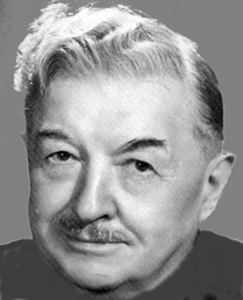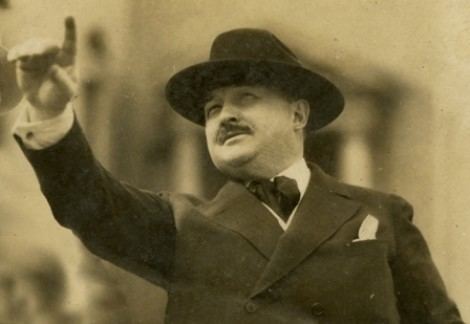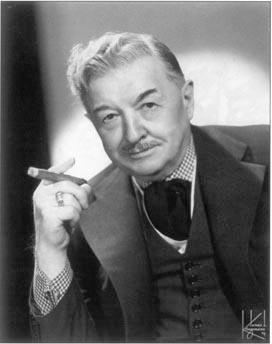Name John Eberson Role Architect | ||
 | ||
Died 1964, Stamford, Connecticut, United States People also search for Auguste Bluysen, Robert Gornall, Bill Willingham, Craig Kinney, Marianne Hellmann Structures The Tampa Theatre and Offic, Majestic Theatre, Akron Civic Theatre, The Louisville Palace, Le Grand Rex | ||
Take a virtual tour of the newly-renovated and reopened Capitol Theatre in downtown Flint
John Adolph Emil Eberson (1875–1954) was a European born American architect best known for the development and promotion of movie palace designs in the atmospheric theatre style.
Contents
- Take a virtual tour of the newly renovated and reopened Capitol Theatre in downtown Flint
- TIMES GONE INSIDE OUT
- Life and career
- Theatres
- Other works
- References

TIME'S GONE INSIDE OUT
Life and career

John Adolf Emil Eberson was born in Czernowitz, Bukovina, Austria-Hungary (today Ukraine), on January 2, 1875. He was the son of Sigfried and Lora (Schmidt) Eberson.
He attended high school in Dresden, Saxony and studied electrical engineering at the University of Vienna. After completing his studies in 1896, Eberson joined the Fourteenth Hussaren Regiment of the Austrian Army.
Eberson immigrated to the United States in 1901, sailing on a ship that left Bremerhaven. He arrived in New York City, and traveled to settle in St. Louis. His first work there was with an electrical contracting company. Within a few years, he affiliated with Johnson Realty and Construction Company, a theatre architecture and construction company. Eberson and Johnson traveled around the eastern part of America, promoting opera houses in small towns. Once the town was persuaded to build an opera house, Eberson would design it and Johnson would build it. It was in this pursuit that Eberson took the title "Opera House John."

Eberson married Beatrice Lamb (1885-1954) in 1903. She immigrated from Great Britain, and was an interior decorator. They had three children, Drew, Lora Mary and Elsa.

In 1904, Eberson and his family moved to Hamilton, Ohio. It was there that Eberson's first theatre was located, the Hamilton Jewel. The 350-seat Jewel was constructed in an existing, pre-Civil War building. While in Hamilton, Eberson designed local buildings, and continued his opera house design work.

The Ebersons moved to Chicago in 1910. In Chicago, Eberson was able to increase his theatre architectural commissions. An early client was Karl Hoblitzelle's Interstate Amusement Company. The first two theatres he designed for Hoblitzelle were the Fort Worth Majestic (Fort Worth, TX, 1911) and the Austin Majestic (Austin, TX, 1915). Neither was ground-breaking in design, and neither was in the atmospheric style. He first experimented with atmospheric design at the Dallas Majestic (1921), the Indiana Theatre (Terre Haute) (1922) and the Orpheum Theatre (Wichita, Kansas) (1922). It was in the design of the Houston Majestic (1923) that Eberson created his first full atmospheric theatre.
In 1926 Eberson moved to New York City. He opened an office at the Rodin Studios, 200 West Fifty-seventh Street. In July 1929, he made the decision to close the Chicago office and consolidate all of the design work in New York. At about the same time, he formally brought his son Drew Eberson (1904–1989) into the business, although Drew had helped before on many sites. Drew became his partner and carried on the business after his father's death.
Eberson attained national, and even international acclaim for his atmospheric theatres, many of them executed in exotic revival styles, including Italian Renaissance, Spanish Revival, Moorish Revival and others.
Theatres
Eberson began his theatre design work with traditional, small town opera houses. One of the first designs was in Hamilton, Ohio, where he and his family lived. Theatre historian David Naylor described Eberson as "an architectural Johnny Appleseed for Sunbelt theater-goers." He designed traditional opera houses and theatres throughout the South.
In the 1920s, beginning with the Hoblitzelle Majestic Theatre (Houston, 1923, razed), Eberson perfected a new theatre design, which became known as the atmospheric theatre style. Eberson himself credited the Hoblitzelle Majestic Theatre (Houston, 1923, razed) as the first atmospheric style theatre. Clearly, Eberson tried out some of his concepts at the Orpheum Theatre (Wichita, Kansas) (1922) and the Indiana Theatre (Terre Haute, Indiana) (1922). However, with the Houston Majestic he perfected the style, adding features that made the departure from all that came before.
Many of Eberson's later designs, some executed with his son Drew, were in the Art Deco and Streamline Moderne styles. In all, Eberson designed close to 100 movie palaces, located in dozens of states in the United States, including:
Other theatres were designed in Mexico City, Mexico, Perth, Sydney and Melbourne, Australia.
A significant number of his estimated 500 buildings, and including an estimated 100 atmospheric theatres, have however been destroyed, as redevelopment and changing taste came to consider the style dated.
Other works
Eberson and his architectural firm also designed other buildings. His earliest commission was in Hamilton, Ohio, where the Ebersons made their home beginning in 1904. His first commissioned job was that same year, when he designed an Ionic-columned porch for Mrs. Sheehan, a Hamilton resident, for which he received $20.
Terre Haute, Indiana is home of Eberson's Indiana Theatre, and to one of Eberson's earliest theaters, the Hippodrome Theatre, which opened in 1915. Branching out from his usual theater design, Eberson also designed the home of Theodore W. Barhydt, the man who commissioned Eberson for the Hippodrome and Indiana Theatres. Terre Haute is one of the few places in the world to boast multiple Eberson buildings, including his only residential design.
Eberson helped with the war effort during World War II. He designed a hospital on Long Island, and housing at Fort Monmouth, New Jersey and at the United States Military Academy.
His other works included the YWCA Hotel (1931), (atmospheric) Cafeteria, & Gym, 320 NW 1st St, Oklahoma City, Oklahoma (razed 1975).
